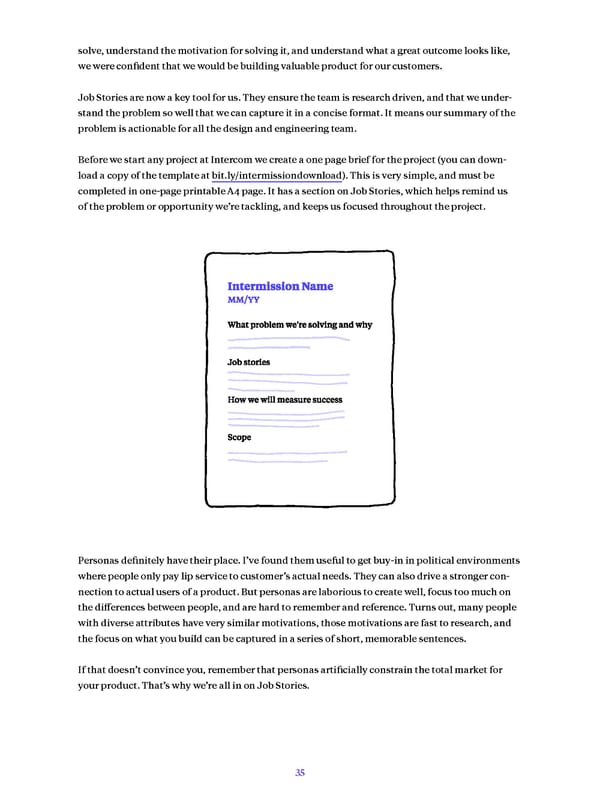solve, understand the motivation for solving it, and understand what a great outcome looks like, we were confident that we would be building valuable product for our customers. Job Stories are now a key tool for us. They ensure the team is research driven, and that we under- stand the problem so well that we can capture it in a concise format. It means our summary of the problem is actionable for all the design and engineering team. Before we start any project at Intercom we create a one page brief for the project (you can down- load a copy of the template at bit.ly/intermissiondownload). This is very simple, and must be completed in one-page printable A4 page. It has a section on Job Stories, which helps remind us of the problem or opportunity we’re tackling, and keeps us focused throughout the project. Personas definitely have their place. I’ve found them useful to get buy-in in political environments where people only pay lip service to customer’s actual needs. They can also drive a stronger con- nection to actual users of a product. But personas are laborious to create well, focus too much on the differences between people, and are hard to remember and reference. Turns out, many people with diverse attributes have very similar motivations, those motivations are fast to research, and the focus on what you build can be captured in a series of short, memorable sentences. If that doesn’t convince you, remember that personas artificially constrain the total market for your product. That’s why we’re all in on Job Stories. 35
 Intercom on Jobs-to-be-Done Page 35 Page 37
Intercom on Jobs-to-be-Done Page 35 Page 37